For those who have just joined us—or for those who have, understandably, forgotten—Madonna and I are on the final leg of a journey, riding from London to Cape Town. To avoid any unnecessary confusion, Madonna is my bike, a steel-framed steed who has carried me, at this point, for nearly 17,000 kilometres across the continent—unfortunately touring schedule clashes meant the real Queen of Pop was busy. I’m writing this entry, from September 2024, in retrospect, and will pen the final few entries over the coming months. I do hope you enjoy.
A Trout Lodge may not strike you as the typical setting a conqueror, on the brink of a colossal siege, might choose to host their war room. But, according to its groundsman, this is exactly the sort of place it was. The Lodge marked for me, as it appeared it did for many, the last bolthole in South Africa, the camp from which the final assault would be launched on the unforgiving ramparts of Lesotho’s southern border—the Sani Pass.
Having just spent two nights and a day nestled in a comfortable crevice of family life in Pietermaritzburg, I’d pedalled out that morning for a day of unremarkable and largely unchallenging riding. As a result of the day’s benignity, I’d spent most of it fused to my saddle, making swift progress to Underberg, where I’d ensconced myself at one of the local farm shops. There, I’d blown the budget of several meals on a homegrown banquet, bookended by milkshakes, before coasting the last kilometres down to The Trout Lodge in a well-provisioned daze.
The temptations that accompanied the relative carte blanche of life in South Africa were quickly conspiring to corrupt. Between toasted sandwiches, electric blankets, packed lunches, family feasts, hot showers, and enough dairy to immobilise a lactose intolerant elephant, a nagging concern had begun to surface that my so-called adventure was starting to soften a little around the midriff. Granted, there had been some dicey moments recently but many of these could just as easily have been experienced riding around the M25 in the fast lane, as by traversing the remote corners of a distant continent. Perhaps I was suffering a bout of lactic amnesia, but the real trials of my journey felt, at that moment, a world away. And fate, it seemed, had deployed a faithful servant to drive home this particular message.
Arriving at the Lodge, I was first accosted not by this messenger but by his hounds—an obedient pack of beasts when muzzled by the presence of their owner, but a rather inhospitable bunch when left to their own devices. I wandered around as the nucleus of this canine symphony in search of warmer reception until the door of the groundsman’s hut swung open and the messenger emerged to greet me.
The Groundsman had once been a tall man, but time had conspired with gravity to modify his frame. He now rose from the ground in a gentle arc, like a reed caught in the breeze. Silver hair met silver beard at the line of his shoulders, then both fell together to his belt. They might have been tucked in; though, on reflection, this is likely just a figment of some wizardly conflation on my part. He stood unsteadily, propped on two sticks, and fixed me with a cobalt gaze.
Ze cyclizt? he asked, his thick slavic accent dousing the question in subtle suspicion. From London, he continued, nodding knowingly at no-one in particular. The dogs sat bewitched beside him, charged too, no doubt, by his strangely sorcerous aura. I began to reel off my well-oiled spiel—London to Cape Town…nine months…last lap…home straight…beautiful places…wonderful people. But The Groundsman seemed serenely unmoved by the journey that brought me to his doorstep, and had soon transfigured the conversation into a comprehensive account of the many more impressive guests that had graced this small patch of piscine heaven.
Propped on the windowsill of my bungalow, keys hanging forgotten from a lanyard, he had soon settled into a reminiscent daze. And zhen zhere was zhe time, he’d say, recounting the extraordinary details of yet another expedition in whose monumental feats The Trout Lodge—and, by proxy, its groundsman—had played some seminal role.
By the time the last episode had come to a close, The Groundsman had managed to weave himself into a number of superhuman feats, world firsts, and fastest known times. I wondered whether, with repeated narration, the tales had become wilder and more baroque. Perhaps one day, The Groundsman would tell of a man, ten feet tall, mounted on the Blessed Virgin Mary—a winged beast that had floated for nine months across the African plains, only finally to descend from celestial flight at the doorstep of none other than The Trout Lodge.
The next morning, I rose before the sun, then allowed it to catch up as I tucked into a dense breakfast at a local hotel. The Groundsman had been nowhere to be seen at dawn, so the launch of this particular adventure had been attended only by his dogs, who’d chased me down the driveway to a chorus of yaps and barks. Still, any encouragement, canine or otherwise, was gratefully received, for today, my adventure was set to regain its stripes.
They call Lesotho ‘The Mountain Kingdom’—and for good reason. The whole country perches at more than 1,000 metres above sea level. With an altitudinal nadir of 1,400 metres, it boasts the charmingly oxymoronic statistic of the highest-lowest-point of any country on the planet. From the south—my angle of attack—it keeps this record well guarded. Here, steep grassy slopes rise from the valley floor, feeding into a precipitous headwall that plateaus abruptly at close to 3,000 metres. Beyond lies Lesotho, invisible behind the basalt bulwark of the Drakensberg.
After a year spent traversing a landscape of arbitrary, colonial borders, a good, honest-to-God escarpment should have come as welcome respite. But this particular frontier is infamously inaccessible. For the first few kilometres, the incline is almost imperceptible, contributing to the well-known and universally loathed illusion of a false flat. As the road joins the path of the Mkhomazana river, it begins to ascend the valley’s contours. The first hairpins heave into view. Stretches of horizontally-scored concrete line the steeper sections for grip.
At the South African border post, the tarmac disappears altogether. As I arrived, I pulled up beside jeeps packed with tourists waiting to be ferried into the sky above for an out-and-back to Africa’s highest pub. Eyes stared out with benign curiosity, their owners chalking me up, no doubt, with all the other fleeting eccentricities of this foreign country, spied through the window of their personal, mobile, air-conditioned observatory. With my audience watching, I stamped my passport, devoured a packet of gummy worms, and saddled up, creeping towards the chainlink fence that marks the threshold of the Sani Pass.
A faint train of smoke trailed from below the crest of a distant mound, dissolving into the ceaseless cerulean sky around it. The sun beat down on my back, leeching the moisture from my shirt as quickly as I could drench myself in the effort of the ascent. Over the next eight kilometres, the road would rise more than 1,300 metres, but already at the relative lowlands of the pass’ base my breathing felt shallow and laboured. I sat firmly in my lowest gear—a stolid ratio of 1:1—with each turn of my cranks producing an equal revolution of my rear wheel. My new tyres—which I’d acquired in Pietermaritzburg and deflated to near-single-digit pressures at the border below—oozed over the contours of the scarred earth beneath them, threatening all the while to concede defeat with a soft hiss and a deferent bow, lowering me to the ground with the graceful poise of a public bus.
The jeeps soon reeled in my meagre lead, their consignment of tourists still fixed with the same benign smiles, as the earth, the sky and a small, struggling cyclist sailed by outside. As they rounded a distant corner, the vehicles seemed to hesitate, toeing the threshold of the lower hairpins. It wasn’t until I reached the same curve some thirty minutes later that I discovered why.
The smoke that had been but an ethereal wisp when spotted from the gate below now cloaked the hillside in a thick yellow blanket—a real pea-souper. I glanced down to see my shins and forearms flecked black with ash. I was soon enveloped, sucking down mouthfuls of noxious smoke, while my lungs, now battling a triad of adversaries—altitude, effort and asphyxiation—doubled down on their protest, slowing my pace to a crawl.
Another corner and the smog revealed its source. The hillside was ablaze. Tongues of flame leapt into the sky ahead, the viscous orange dancing between the blue sky and the blackened scrub to paint the hillside in elemental strokes. As I wound my way ever upwards, eyes trained on the small patch of visible earth ahead, figures emerged through the haze dressed in thick navy overalls, heads mummified in makeshift material ventilators. Some hacked, some fanned, herding the blaze with parrying blows and tactical concessions. We exchanged non-verbal acknowledgements—I of their work, they of my recklessness—before returning to the relative tasks at hand.
And then I was through, cast out from the suffocating closeness, shrugging off the last tendrils of smoke which, thanks to the prevailing gusts channelling them back through the valley below, trailed behind me like the train of a fine gown. Beside me, the naked flames now shimmered in the dazzling brilliance of morning.
Then the rocks arrived. Dislodged from the unstable scree slopes above, they plummeted, ricocheting off ledges in a chaotic missile shower. I quickly refastened my helmet and hugged the track’s inner edge, keeping my gaze down and my cadence up. It struck me that, in this case, it seemed hell had inverted, and I was ascending, slowly, through its nine circles. What Danté might hold in store above was anyone’s guess.
With the bulk of the climb now unravelling beneath me, I reached the upper switchbacks—the famed twist in the Sani Pass’ tail. At the head of the valley, these turns bank sharply, knitting together the sheer slope like the lacing of a tight corset. For me, this section amounted to a long walk, punctuated by a good deal of general grunting and several rambling soliloquies peppered with profanity. Not that these were in any danger of being overheard, for the mononymous poet’s final trial soon came; a gale-force wind that licked the top of the pass in ferocious gusts, silencing my protests in the process. Now facing the very real threat of a rather swifter descent to the valley floor than anticipated, I hunkered behind Madonna, bracing against her frame with each fresh surge before scrabbling up the scree in a bid to make progress before the next.
Sitting cocooned inside the Sani Mountain Lodge half an hour later, I replayed the closing bars of my assault—which had been filmed by one of the gallery of gathered tourists—on the screen of a phone, watching as what I’d hoped might appear a heroic effort wilted pathetically in miniature. It was, perhaps, an adventure to be retold rather than rewatched, I reflected, just as The Groundsman would have liked. Thanking them for their post factum encouragement I drained the last of my beer, wrapped up, and pressed on across the gusty plains of the plateau.




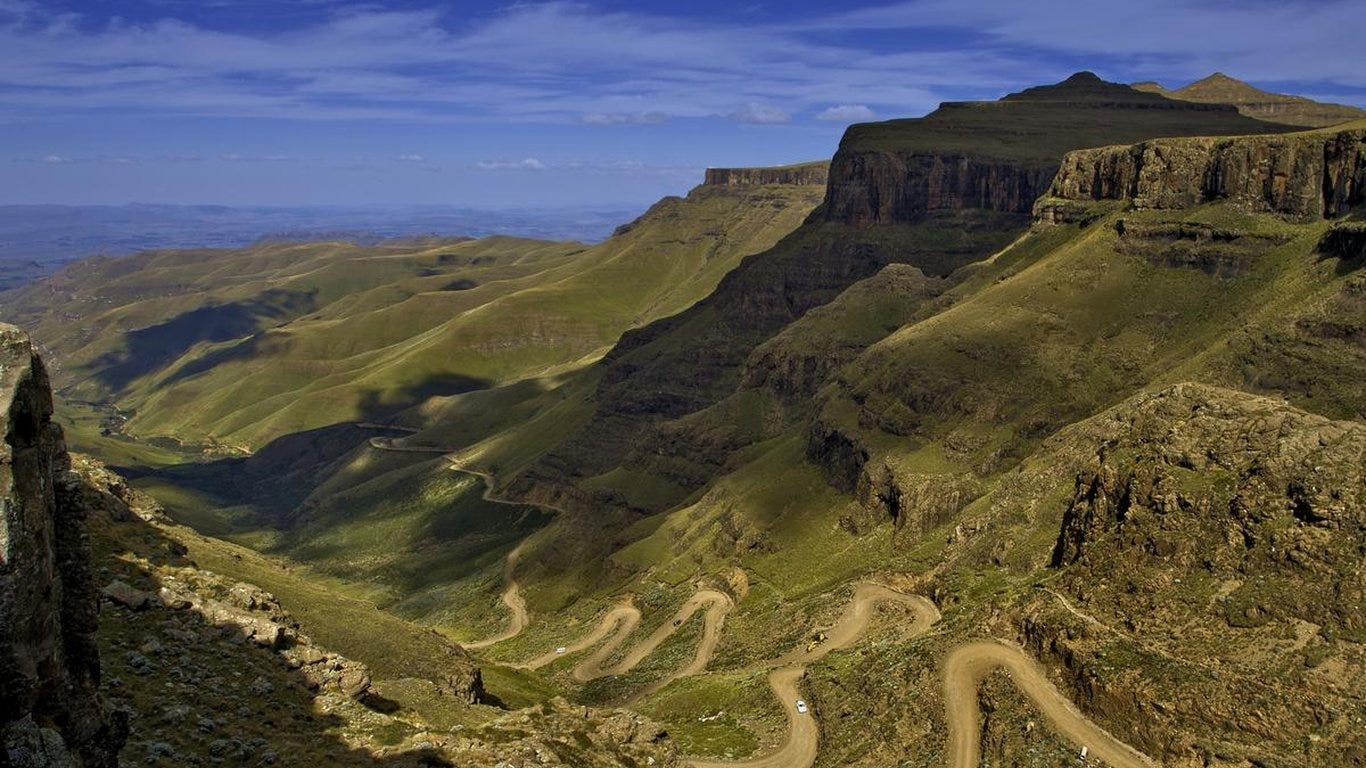
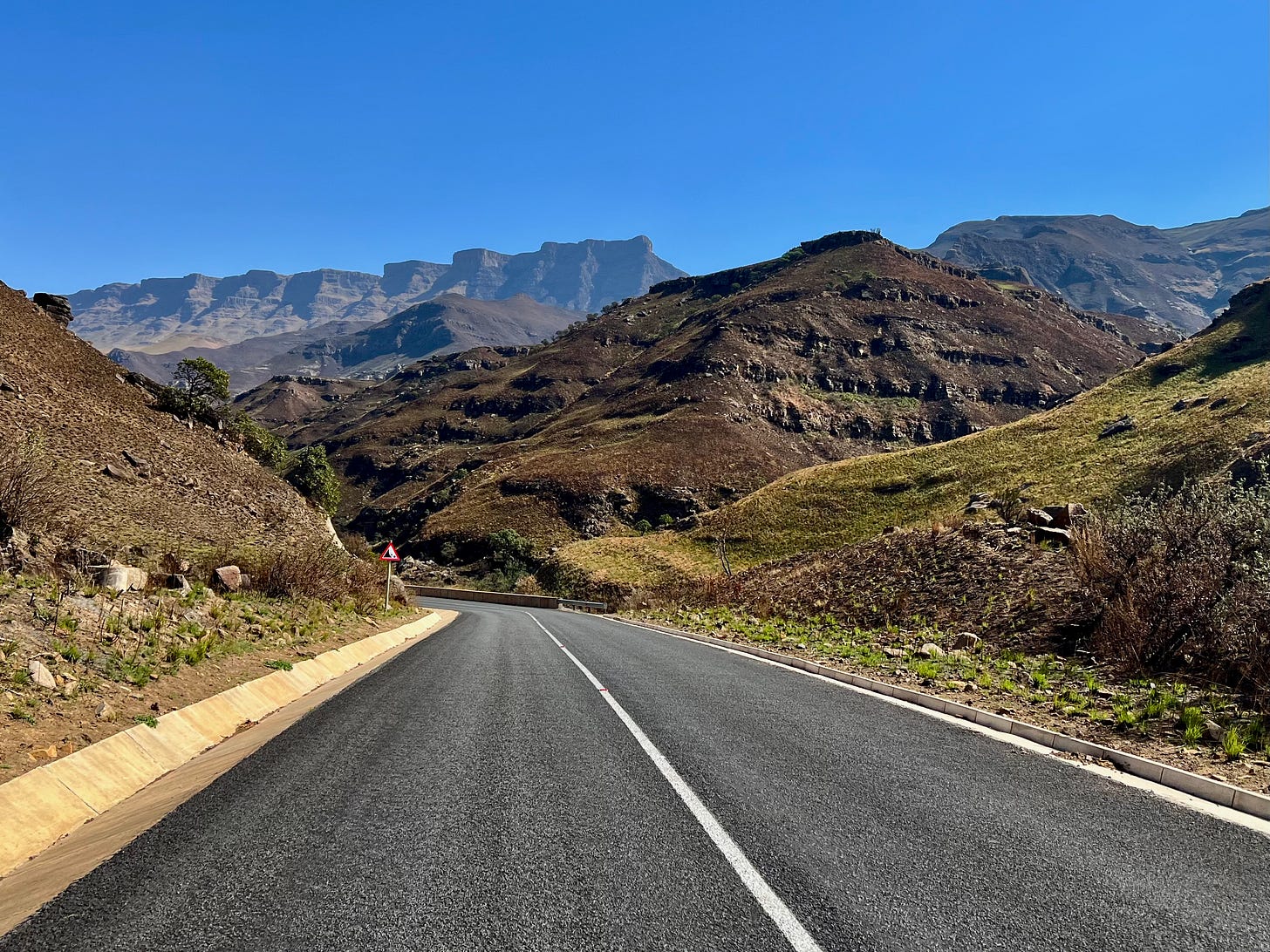
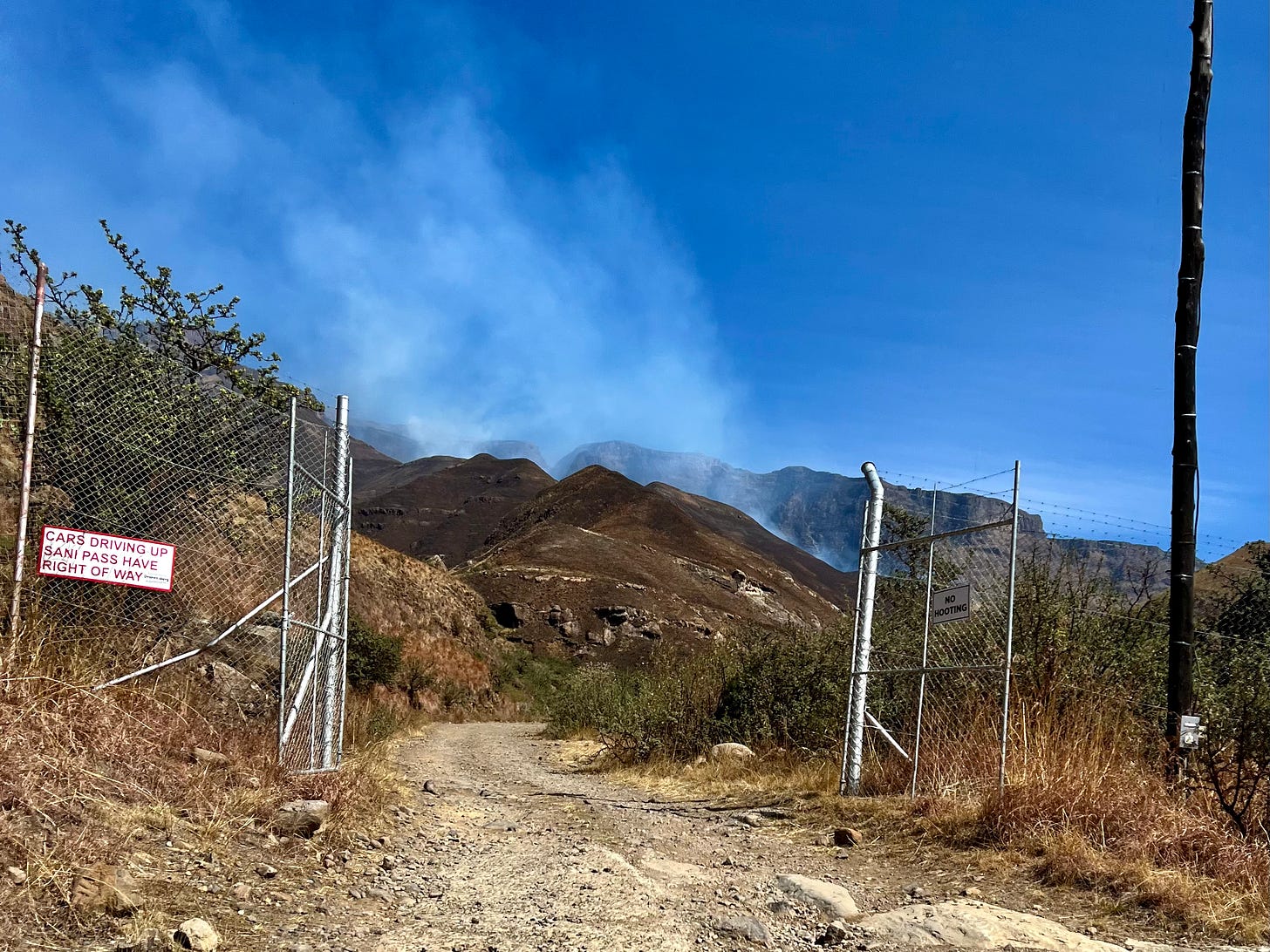

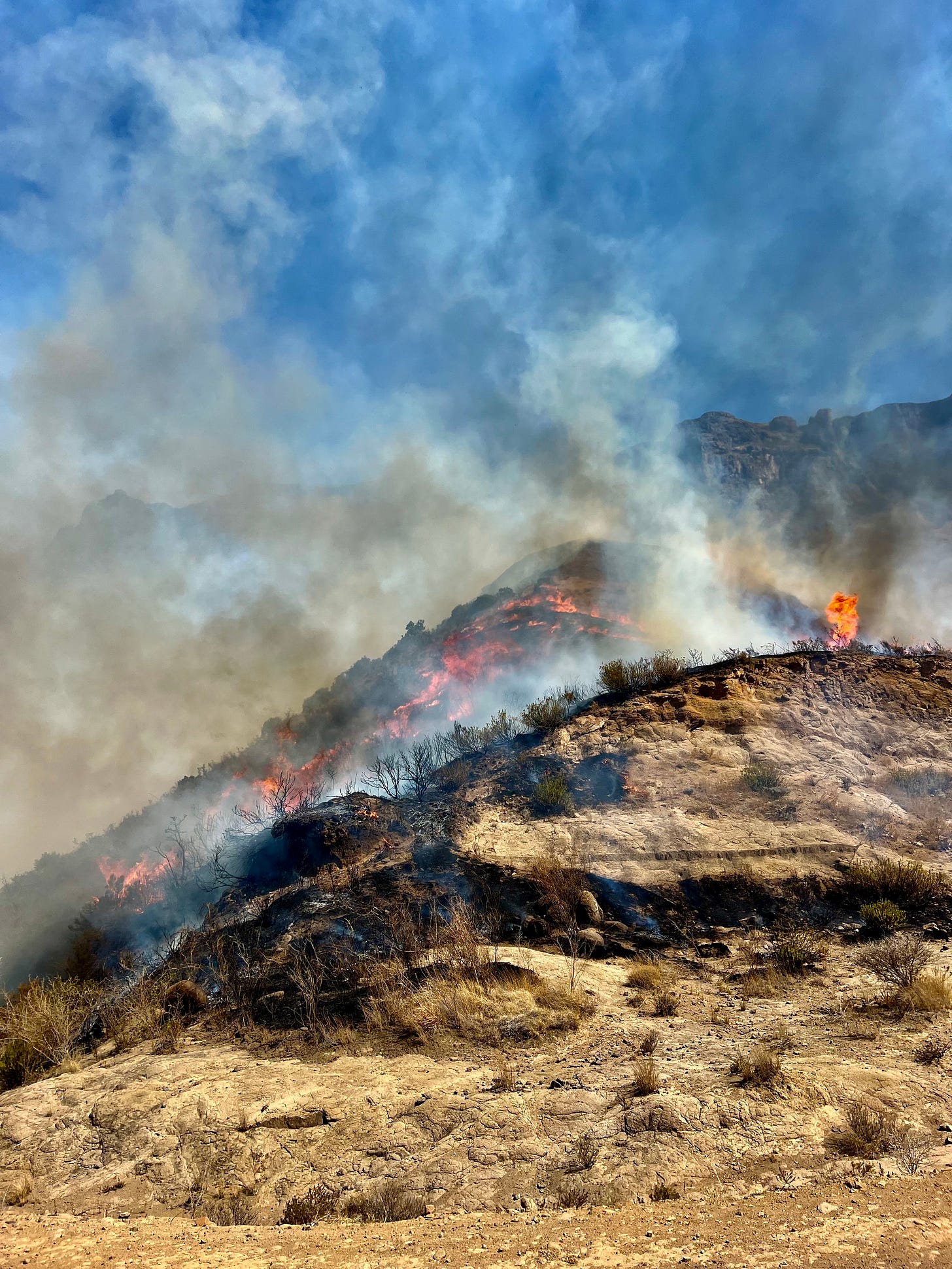
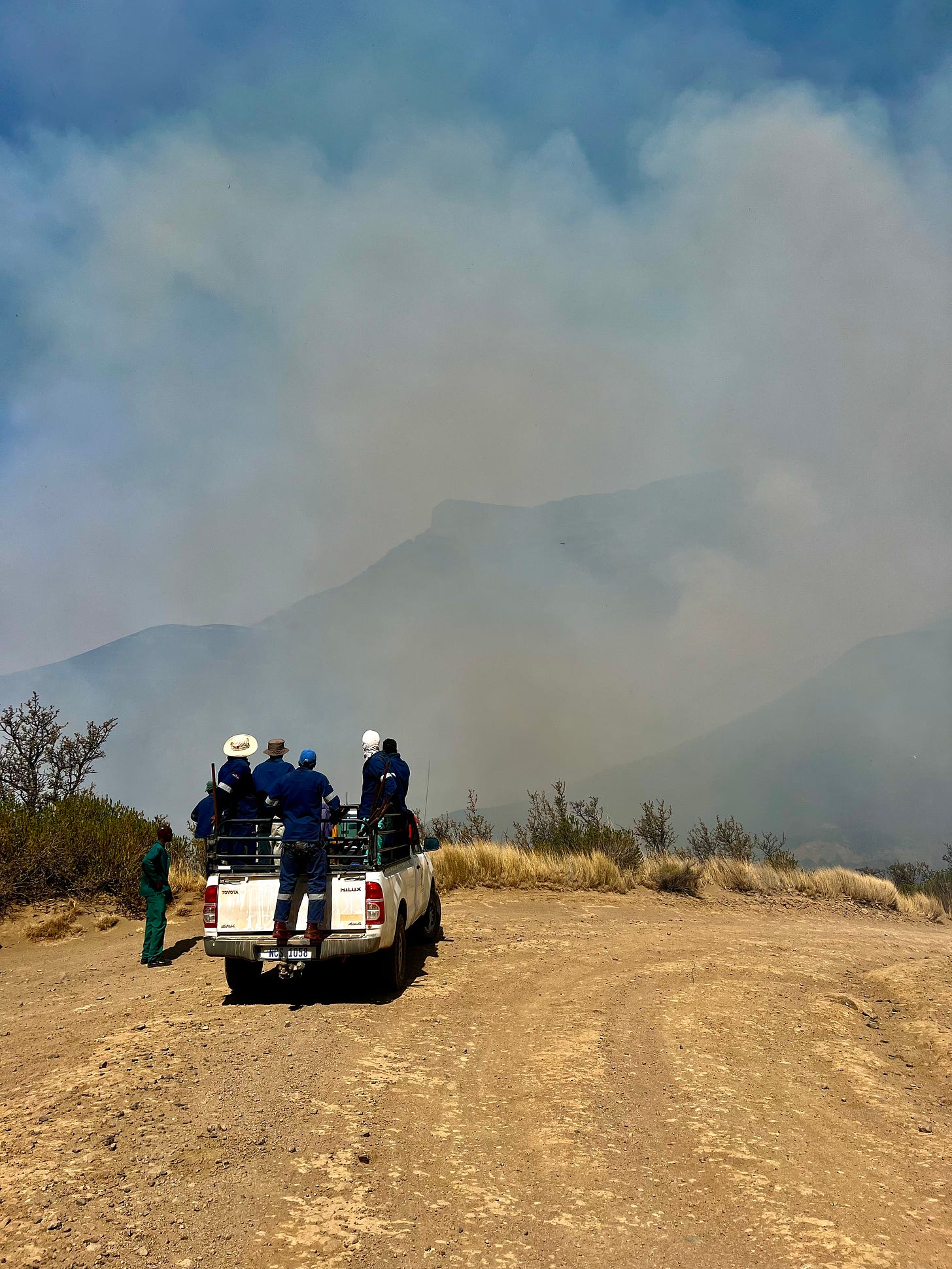
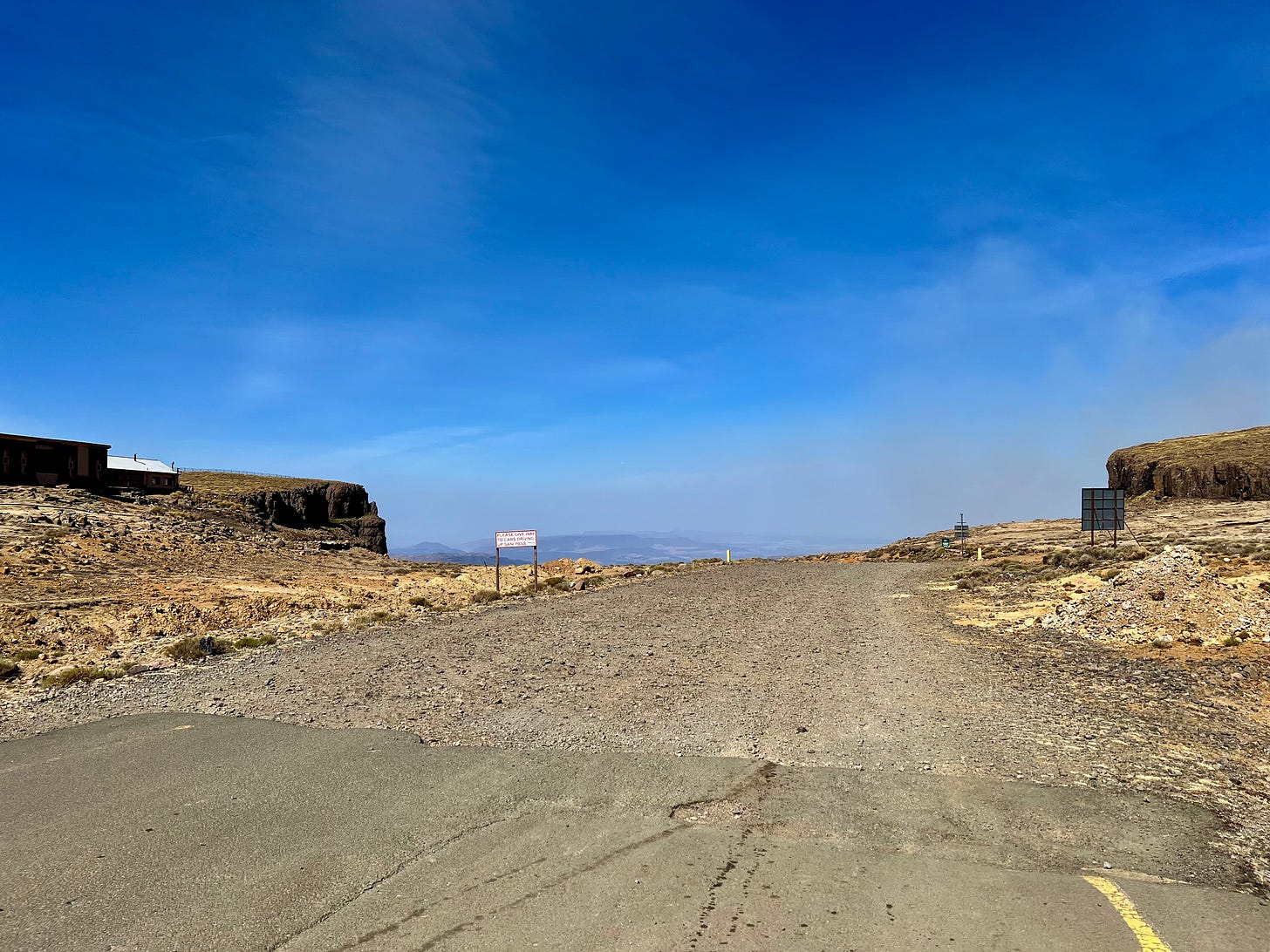
Hey Rosie
Great to have another installment
What an epic ride, encouraged at the start by the dogs and then recorded at the finish!
If I were to recorded riding my bike on any incline I would probably still be slower than you, after you'd completed 1250m climb!
Keep the blogs coming as capacity allows
xxx 💪🚲 🥰 xxx
At last something good to read in 2025. Thanks as always!